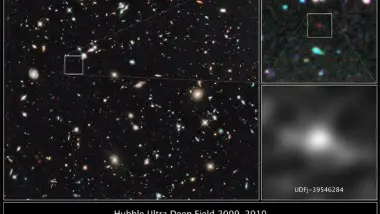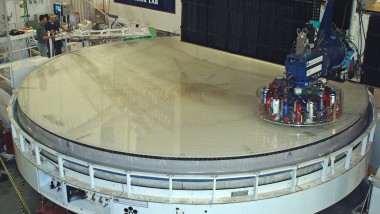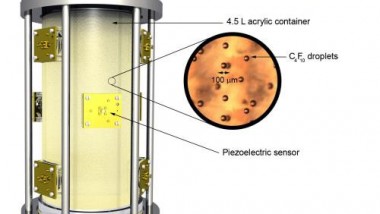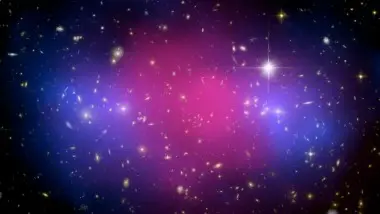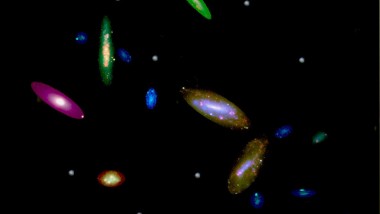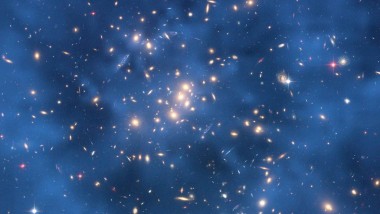The farthest and oldest galaxy ever seen is a red blob in this infrared image taken by the Wide Field Camera 3 on the Hubble Space Telescope. Source: NASA, ESA, G. Illingworth (University of California, Santa Cruz), R. Bouwens (University ...
Giant Magellan Telescope Heads On
Nine research institutions on three continents have signed a founder’s agreement to construct and operate the Giant Magellan Telescope at Las Campanas Observatory in the Andes Mountains of Chile. The telescope will consist of seven co-mounted 8.4 meter mirror segments ...
Dark Matter Structures in the Milky Way Resolved
Cosmologists from the US and Switzerland were able to resolve dark matter structures in the Milky Way. Using a computer simulation, the team was able to detect dark matter sub-halos and streams contained within the dark matter halo engulfing our ...
A Step Towards the Detection of WIMPs
A Canadian, American, and Czech team of astronomers has achieved a higher separation of WIMP interactions from other interactions in a dark matter detector that previously achieved. This resulted during calibration runs of new modules used in the PICASSO project ...
Galaxy Clusters Collision Captured
An international team of astronomers, led by UCSB and Stanford astronomers, captured the collision of two galaxy clusters using the Hubble Space Telescope and the Chandra X-Ray Observatory. Like the Bullet Cluster collision detected two years ago, this collision supports ...
Dark Matter Filament Detected Near the Milky Way
Scientists at the Tel Aviv University discovered a string of galaxies only 15 million light years from the Milky Way. This group stands out because despite no apparent mutual interaction they display similar behavior. They all had recent star formation ...
Dark Matter is Denser in the Solar System
Dark Matter is a ubiquitous and mysterious type of matter that comprises about 23% of the energy density of the universe, much more than the 4% accounted for by the visible and more familiar matter known as baryonic matter. The ...

